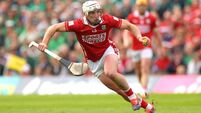Conor McGregor: Smart business or reheated patriotism?

It is to state the obvious that he – and his management – understand the business of modern sport and what is required to succeed.
Even those who find the sport distasteful (or struggle to understand it) cannot deny McGregor’s hard work, his exceptional fitness, and his genius for marketing.
If he isn’t there already, he is on the cusp of becoming one of the few people for whom it can be said that they are bigger than the sport in which they compete.
At the heart of this is McGregor’s ability to sell a fight. In the modern world, this means being able to attract subscribers on pay-per-view TV, where the big money is to be made.
But if the medium being used is a truly modern one, the techniques are well-rehearsed. Much has been made of the intensity and charisma McGregor brings to his press conferences.

But he also relies heavily on that tried and trusted method of wrapping oneself tightly in the flag.
This has an obvious appeal in Ireland – but it is also a valuable tool in courting support among Irish-Americans. And it is in America that the real money is to be made.
Fighting in Boston in 2013, McGregor said: ‘Boston is a fantastic city. The people are phenomenal out there. It’s a true Irish town. It was crazy going out there the first time, it really was a crazy experience for me because you always hear about the Irish Americans, even when I’m in America it’s like everyone is Irish.’ Every fight has become an opportunity to make an expression of ‘Irishness’.
‘I will raise the tri-colour high every single time!!!’, said McGregor in January 2015 when he fought Dennis Siver.
When he entered the ring to fight Chad Mendes in July 2015, Sinéad O’Connor – surrounded by smoke and lights – sang the old Republican ballad ‘The Foggy Dew’ as the huge travelling Irish support roared their support and waved tricolours.

By December McGregor was talking about how he would ‘unify my belt for Ireland.’ Fighting ‘for Ireland’ is a tradition as old as professional fighting, itself. Two hundred years ago Dan Donnelly was positioned as the ‘Champion of Ireland’ and a series of fights with English boxers drew tens of thousands of supporters.
In December 1815, for example, Donnelly fought the English boxer George Cooper in a part of the Curragh in Kildare which is now known as Donnelly’s Hollow.
Donnelly overwhelmed Cooper and claimed the purse of £60. After the fight, he made his way back towards Dublin in a carriage pulled by his admirers.
By then, Donnelly’s status as a national hero had already been achieved. Legend holds that the doctor who attended his birth had predicted he would ‘perform great deeds for Ireland.’
Typical of boxing, of course, his life is one in which reality and mythology are not easily separated.
For example, it is also claimed that when he heroically saved a woman from being deliberately drowned in the Liffey by two sailors, they beat him close to death.
He recovered in time to defeat another English boxer Tom Hall.
It was claimed that Donnelly was actually a peace-loving man who only agreed to fight Hall at the insistence of fellow Dubliners who called on him to ‘defend the honour of Ireland.’
That boxing promoters played on the fractious relationship between Britain and Ireland was typical of the period in which similar rivalries were wrapped around Romany, Jewish and black fighters.
It’s a method of marketing which has been repeated time and again. For example, in the 1930s, the Cobh boxer Jack Doyle – known as ‘The Gorgeous Gael’, ‘The Body Beautiful’ and ‘The King of Clout’ – began a professional boxing career with ten straight knockouts (courtesy of a powerful right hand).
This brought him massive publicity and his successes, backed by his looks and a whirl of hype, allowed him to embark on a lifestyle that neutered his talent even as it developed.
In July 1933 he fought the Englishman Jack Petersen for the British heavyweight championship in front of a 70,000 crowd in White City, London, but was disqualified for a series of low blows in the second round.
This induced a mini-riot as his supporters stormed the ring, throwing chairs, before carrying him shoulder-high to Marble Arch. Returning to an adoring Irish public who viewed his disqualification as part of a British conspiracy, he packed out the 3,500-seater Theatre Royal in Dublin and the Opera House in Cork, where he demonstrated his fine tenor voice in concerts.

Doyle went on to star in Hollywood movies, and formed a carousing friendship with Errol Flynn and Clark Gable, before his career dwindled and died.
For Doyle – and for Donnelly before him – their ‘Irishness’ was not enough to protect them when the money stopped rolling in and their bodies began to betray them.
The fighting world is full of men like them who destroyed what they had earned and ended up in penury and ill-health. If McGregor is as clever as he would appear to be, he will milk the sport for everything he can get from it and then get out.
But will he be able to resist the lure of being the centre of attention? Will he be able to cope without the extraordinary rush of adrenaline which must come from doing what he does in the way that he does it?
Basically, will he know when to walk away and not come back?
History suggests that he won’t – and that element of the McGregor story might also prove to be something old served up anew.
CONNECT WITH US TODAY
Be the first to know the latest news and updates











